#juvenile plumage
Explore tagged Tumblr posts
Text
In case people are curious, this is a young one. A lot of birds, this species included, start off their lives with camouflaged plumage. This is because the mortality rate of young birds due to predation is extremely high, mainly because the birds are inexperienced.
If they survive their first season, their chance of being killed by a predator declines greatly, mainly because they're birds, and they can fly! So once they know what they're doing, they're pretty safe.
But that first year is rough. So evolution has given them an extra boost of this camouflaged plumage. It's standing out now, but against a backdrop of winter vegetation it would be nearly invisible in many environments.
After that first year they develop bold black-and-white plumage that makes them easier to spot. You can find great photos contrasting adult with juvenile plumage of this species here.
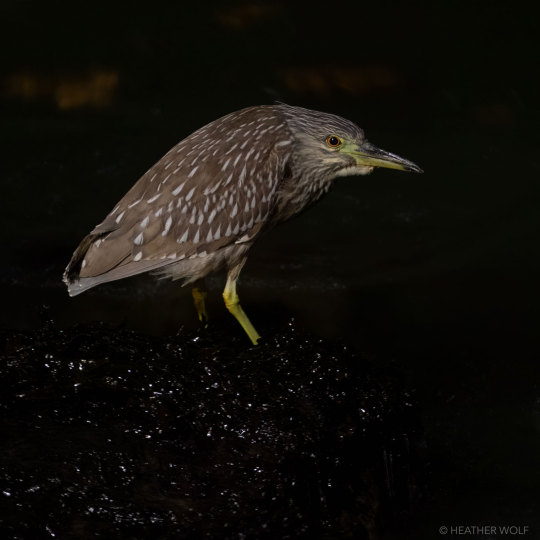
Black-crowned Night-Heron at night! Brooklyn Bridge Park, Pier 5
517 notes
·
View notes
Text
I feel like I know a decent amount of birds but then I’ll go birding and be like “what the fuck is that?” for what feels like everything
#do not recommend Merlin to me I’m aware#a lot of the time I get thrown off because it’s a juvenile or in non breeding plumage#or the glimpse has come and gone too quick
2 notes
·
View notes
Text
hahahaha we just had a completely bald blue jay at one of the feeders


Naked!
#i looked it up this is apparently common for molting blue jays. especially juveniles getting their winter plumage ready. Wild#crown emoji
11 notes
·
View notes
Text

[ID: a digital drawing of a bald eagle facing forward, perched on a branch with a fish in its talons. It is on a colorful background reminiscent of pixels. End.]
Bald eagle, Haliaeetus leucocephalus
Once on the brink of extinction with 417 nesting pairs in 1963, they bounced back after significant conservation efforts and a federal regulation of an environmentally harmful pesticide. In 2019 the population was around 316,700 individuals. The United States has elected a guy who wants to gut federal regulations in the name of "efficiency", but federal environmental protections like the ban on DDT are in place for a reason!!!
Their species name leucocephalus means "white head"! Juvenile eagles are brown all over - it takes a few years to start developing their iconic adult plumage.
I love these guys but wanted to be very particular about avoiding a patriotic vibe in their drawing, so I hope you enjoy the technicolor light show background. B-)
507 notes
·
View notes
Note
what's washington's eagle?
One of Audubon's unidentified birds, a very large sea eagle with a 10 foot wingspan. He claimed to have spotted them very rarely - suggesting they were nearly extinct - before he managed to shoot and dissect/paint one, which he described in detail:
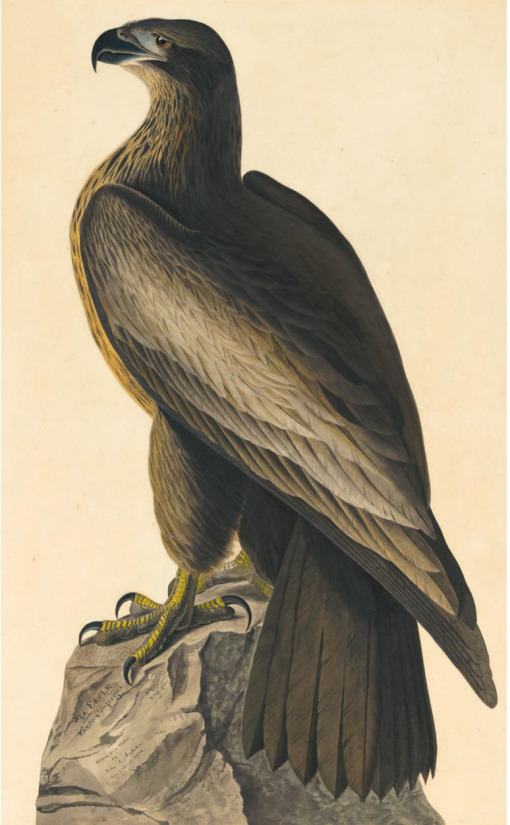
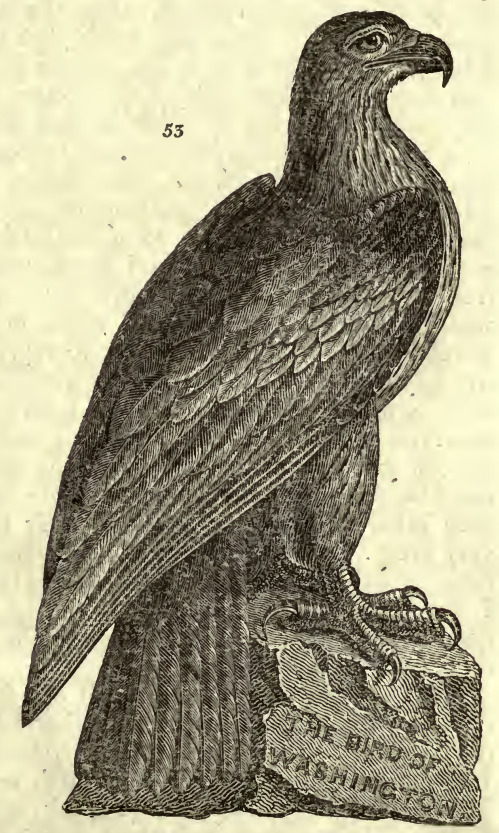

This is often modernly explained as Audubon not understanding that young bald eagles lack the white head and thinking they were a new species. I personally think that's bullshit; not only does the bird only very superficially resemble a bald or golden eagle (some of the traits including a lack of mottling and an abnormally prominent supraorbital ridge along with, of course, it being huge), he was entirely familiar with juvenile bald eagles and painted/described them accurately:
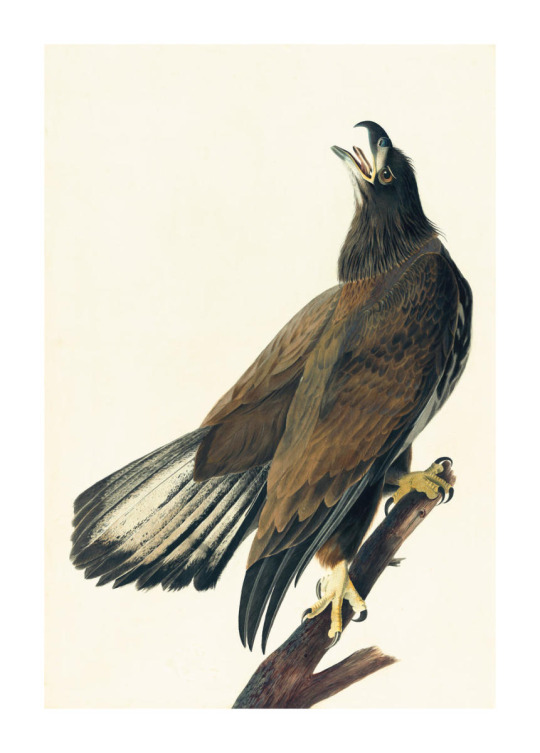
if that wasn't enough, he also directly stated this wasn't the case:
Being convinced that the bird was unknown to naturalists, I felt particularly anxious to learn its habits, and in what particulars it differed from the rest of its genus. Mr. Wilson had confounded it with the bald or white-headed eagle, one of the young of which he has given the figure of, to represent it. But I am strongly inclined to believe that he never saw this bird; for it must be acknowledged that he was a very close and accurate observer, and, had he met with it, could hardly have fallen into so great an error, unless he was deceived by the near resemblance which the young of these two species bear to each other in plumage, although their difference in size is very great: but, in the old birds, the likeness ceases to exist; both in habits and appearance they are totally dissimilar.
(page 133)
more reasonably, it's been suggested he made up a giant american eagle (audubon's paintings are all life size so this would be very impressive in a gallery, and of course an eagle is very immediately evocative) in order to impress investors and plagiarized the illustration entirely rather than drawing it from life:
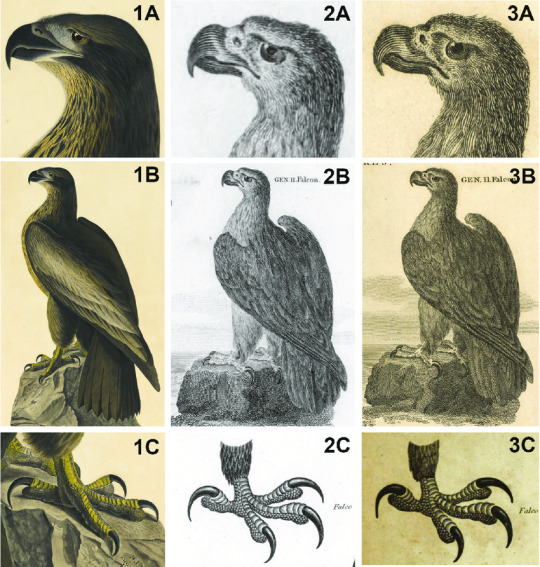
the other option, of course, is that he wasn't bullshitting and there really was a very large, near-extinct eagle in north america at the time that he described accurately; apparently a specimen or two were even listed in museum archives at the time (hence my comparison to the long-necked seal).
#I'm not of the 'this is 100% undoubtedly a fraud' mindset here#which in zoological and birding circles is roughly like admitting you think loch ness is full of plesiosaurs
571 notes
·
View notes
Text

Spectacled Owl (Pulsatrix perspicillata), juvenile with the last remnants of immature downy plumage on head, family Strigidae, order Strigiformes, Costa Rica
photograph by Jean Bonilla (@wildlife_journeys_cr)
702 notes
·
View notes
Text

Bird #24 - the diederik cuckoo (LC)
Adult female plumage.
Also known as the didric or dideric cuckoo; named after the male's loud territorial call that consists of a few long repeated 'dee's followed by a quick 'derik'. This cuckoo lives throughout sub-Saharan Africa, but also further north in the Arabian peninsula. Females and juveniles have this shiny coppery colour, but males are more of a glossy forest green with some blue and copper hints.
#cuculiformes#cuculidae#bird of the day#bird art#birds#bird#digital illustration#cuckoo#theyre surprisingly similar to the shining cuckoos that we have here in NZ#but less green#ig I thought that shining cuckoos looked pretty unique
451 notes
·
View notes
Text
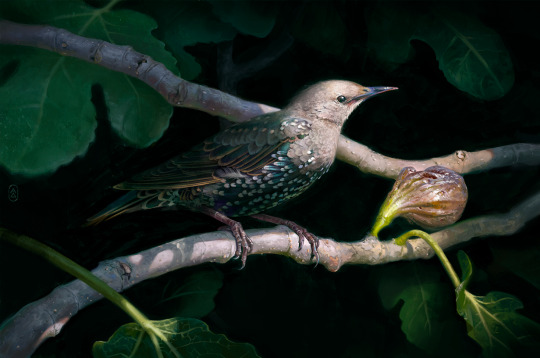
the beautiful thief A literal horde of starlings lived off my fig tree last summer, the juveniles look so weird with half drab brown baby plumage and half insane iridescent adult feathers
860 notes
·
View notes
Text

There is a season tern, tern, tern!
Three Royal terns resting on a warm beach. The third is a juvenile, you can note the dark gray wing bars and paler bill. Royal terns don’t gain their adult plumage until three years of age. This species can live up to 30 years in the wild!
A group of Royal terns can be called a “Highness”
276 notes
·
View notes
Text
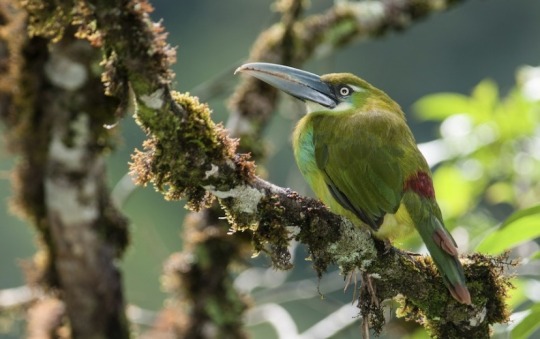



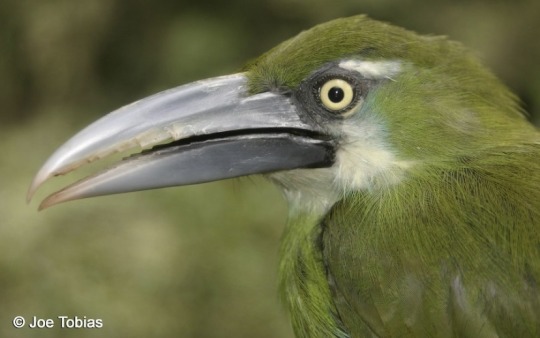
the blue-banded toucanet is a relatively small member of the toucan family. they are found in tropical forests of bolivia and peru. these toucanets tend to be social, and are often found in pairs or small groups. like other toucan species, they are primarily fruit-eaters, but are opportunistic feeders that will take lizards and other small prey. the sexes share the same plumage, but juveniles are duller in coloration.
2K notes
·
View notes
Text

October 21, 2024 - São Tomé Fiscal or Newton's Fiscal (Lanius newtoni) These shrikes are found in rainforests on the island of São Tomé off the western coast of Africa. The details of their diet are not well known, though they probably feed on small beetles and other insects. Little is known about their breeding behavior, but they are believed to be monogamous and birds in breeding condition and those with some juvenile plumage have been observed in November and December. They are classified as Critically Endangered by the IUCN due to their extremely small population and range and may face threats from habitat destruction and invasive predators.
60 notes
·
View notes
Text

Blackbird/koltrast. Värmland, Sweden (April 6, 2024). Juvenile blackbirds, along with female adults, exhibit a brown plumage. It's the mature male blackbird that stands out with its striking black hue, complemented by an orange or yellow beak and eye ring. But all of them are beautiful!
175 notes
·
View notes
Text
The screaming piha (Lipaugus vociferans ) is a species of passerine bird in the family Cotingidae. It is found in humid forests in the Amazon and tropical parts of the Mata Atlântica in South America. It is a common bird in the middle and lower parts of the canopy at altitudes below about 500 m (1,600 ft), or up to 1,000 m (3,300 ft) in Venezuela and the Andean foothills. It is adapting well to human settlement areas like gardens and parks, and is considered to be of least concern by BirdLife International.
The screaming piha grows to a length of about 25 cm (10 in). Both sexes have dull grey plumage (wings and tail often somewhat duskier) and the underparts are paler grey. Juveniles are grey tinged with brown or rust.
It has a voice that is extraordinarily loud, reaching 116 dB, second only to that of the white bellbird. In the breeding season, up to ten males may gather in loose leks, where they sing to attract females. The Cofán people of Ecuador call it the Pwe-pwe Yoh, which is a reference to its voice. Among the Ecuadorian Secoyas, the bird is known as the Kwow-kwee-yo. The sound is frequently used in movies as a sound typical of the Amazon rainforest.
Despite its distinctive voice, the screaming piha is an elusive bird, remaining still for long periods and blending in with the branches. It is usually solitary, but may sometimes join a mixed species foraging group. It feeds mainly on fruits, but also consumes insects, sometimes flying out from its perch to pluck a fruit or catch an insect in the air with a trogon-like hover.
Description source:
144 notes
·
View notes
Text
Harpies and Molting
Harpies, similar to regular birds, molt. The process involves the systematic loss of feathers, followed by the growth of new ones, typically triggered by hormonal changes, seasonal cycles, and environmental conditions.
Now, birds molt for several reasons but it all boils down to two main ones. The first reason is that they need to change plumage for different seasons or life stages. Juvenile birds and harpies initially have a downy and then juvenile plumage for a while after fledging, which provides them with warmth and enhanced camouflage.
Young non-breeding birds are often dull, brown, and streaked, as you may have noticed, to help them blend into their environment. As they grow, they transition to their adult plumage that serves other purposes.
Molting can be uncomfortable, but it is generally not considered truly painful. Your harpie will likely complain about itchiness and insist on you helping them with dislodging any loose feathers as human hands and fingers are quite nibble and excellent for such tasks.
The duration of a bird’s molting process can vary significantly depending on the species and the extent of the molt. Partial molts can take as little as 2 weeks while complete molts 4-6 weeks. Larger birds tend to replace their feathers in a staggered manner so a full molt may take months or even a year.
Larger birds, such as eagles and pelicans, handle molting differently due to the high energy cost of replacing their sizeable flight feathers. Instead of a complete annual molt, they replace their flight feathers in a staggered manner over a year or more. Adult harpies are a combination of both despite their breeds on account of their large size compared to their bird counterparts.
Birds still molt when stressed, but high-stress levels can disrupt and negatively impact the molt, leading to abnormal feather loss, stunted re-growth, or visibly damaged feathers. As a result, it is considered important to keep your harpy as relaxed as you can during the process, give them attention, affection, food, and grooming/preening.
Vil in particular can get so pissy and insecure when it gets to the time when he starts to molt. Before when it happened, he refused to let anyone but Rook and Epel see him, but as his mate, you also are allowed to…along with the honor of fulfilling his demands to help ease the discomfort of his molting
There are special bath mixes that can be used to help soothe the discomfort and itchy skin of harpies going through the process and Vil makes his own special high-quality ones that he also insists on Rook on Epel using.
…please reassure him he’s still pretty while he’s sitting in the warm bath as you run your hands through his wings and dislodge loose feathers.

#twisted wonderland#twst#nonhuman au#harpy#harpies#twst vil#harpy vil#vil schoenheit#twisted wonderland vil
69 notes
·
View notes
Text







So Prince Creek is this fossil site in Alaska and is one the most northerly places dinosaurs have been discovered to live.
There were more species than these three who would've lived in the Cretaceous habitat.
Dromeosaurus is an honorable mention (I may draw one for my next graphic)
Presented are Pachyrhinosaurus; I referenced some other conceptual designs of the species where it was drawn with wooly fur similar to a mammoth or a musk ox. Ofc since it's a dino it would've been feathers and not hair like us mammals have.
Edmontosaurus; pretty iconic chunky. Favorite T-Rex Snack. I didn't draw this one with a crest although it sometimes is depicted with one. I made sure to look up the skeletal structure of this species for the anatomy to be as true to study as possible.
Lastly there is Nanuqsaurus (about half of T-Rex's length) they would've reached around 20ft long and weighed about a ton. I imagined them functioning like wolves or a lion pride where a similar color spectrum is shared with slight differences to signify heierachry and breeding status.
I imagine that the dominant male would've been white feathered while the subordinate adult males would retain blue-grey plumage until they potentially became an alpha. A signifying mark of an alpha male would also be the bright orange spots on the tail; important for attaining the approval of females.
The females would be less intricately patterned than the males, and the dominant female would also be characterized by a black stripe down the back.
As presented on the 2nd season of prehistoric planet on apple TV, the nanuqsaurus is imagined here as a pack hunter of pachyrhinosaurus and perhaps juvenile edmontosaurus.
#princecreekformation#nanuqsaurus#edmontosaurus#pachyrhinosaurus#dinosaur#paleontology#black artist#wildlife#paleoart
80 notes
·
View notes
Note
Can I ask what Harpy babies/chicks are like? Are they precocial or altricial, or does it a mix of both or depend on the kind of harpy?
depends on the type, it divides along pretty much the same lines as irl birds. however in general they do develop relatively slowly, and the altricial ones in particular might take several years before they can survive without constant care
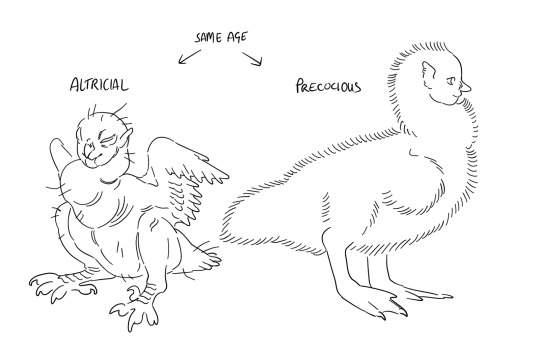
these ones are about 2 years old
childrearing techniques and timelines differ by culture and flock. in the ama plains eyrie (where Cuinn comes from), for example, they are considered full members of the eyrie when they can fly (around 7-8 years old), a pretty basic milestone which is common to many cultures. before then, they are barely considered people, kinda like young human kids irl lol. but because adult plumage takes a further decade to grow in, they are not considered adults and although they might live apart from their parents, they aren't allowed to pick a nest site of their own until they have adult plumage (and, therefore, can reproduce and require nest space). instead of their own nest, flighted juveniles will form their own bands and houseshare. the adult plumage varies by individual since they don't all look alike, unlike birds of the same species, but it's marked by patches of unbroken colour and a yellowing of the beak and cere.
among types that are more precocial and grow their flight feathers early, adulthood is still determined by terminal plumage development.
84 notes
·
View notes